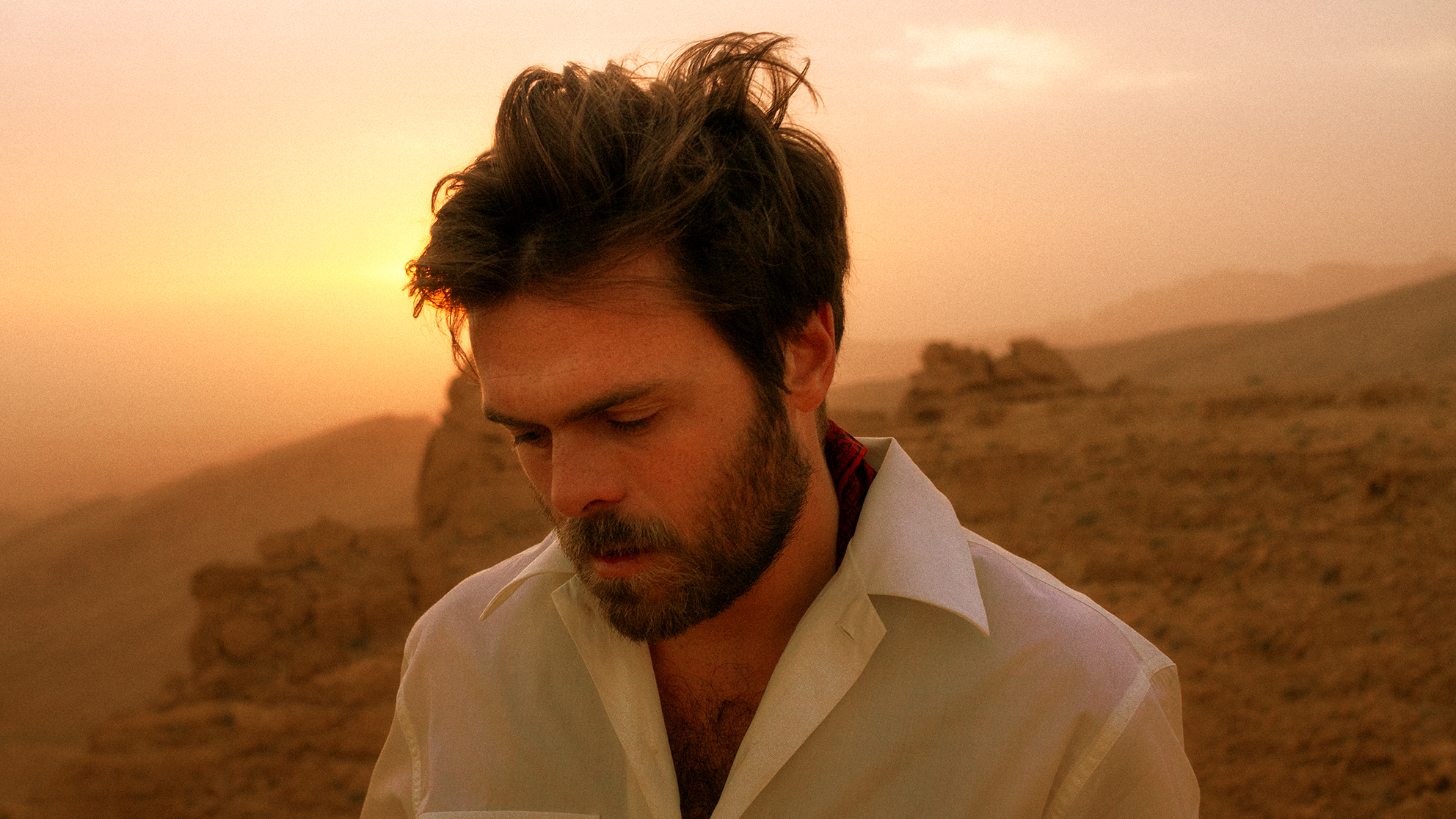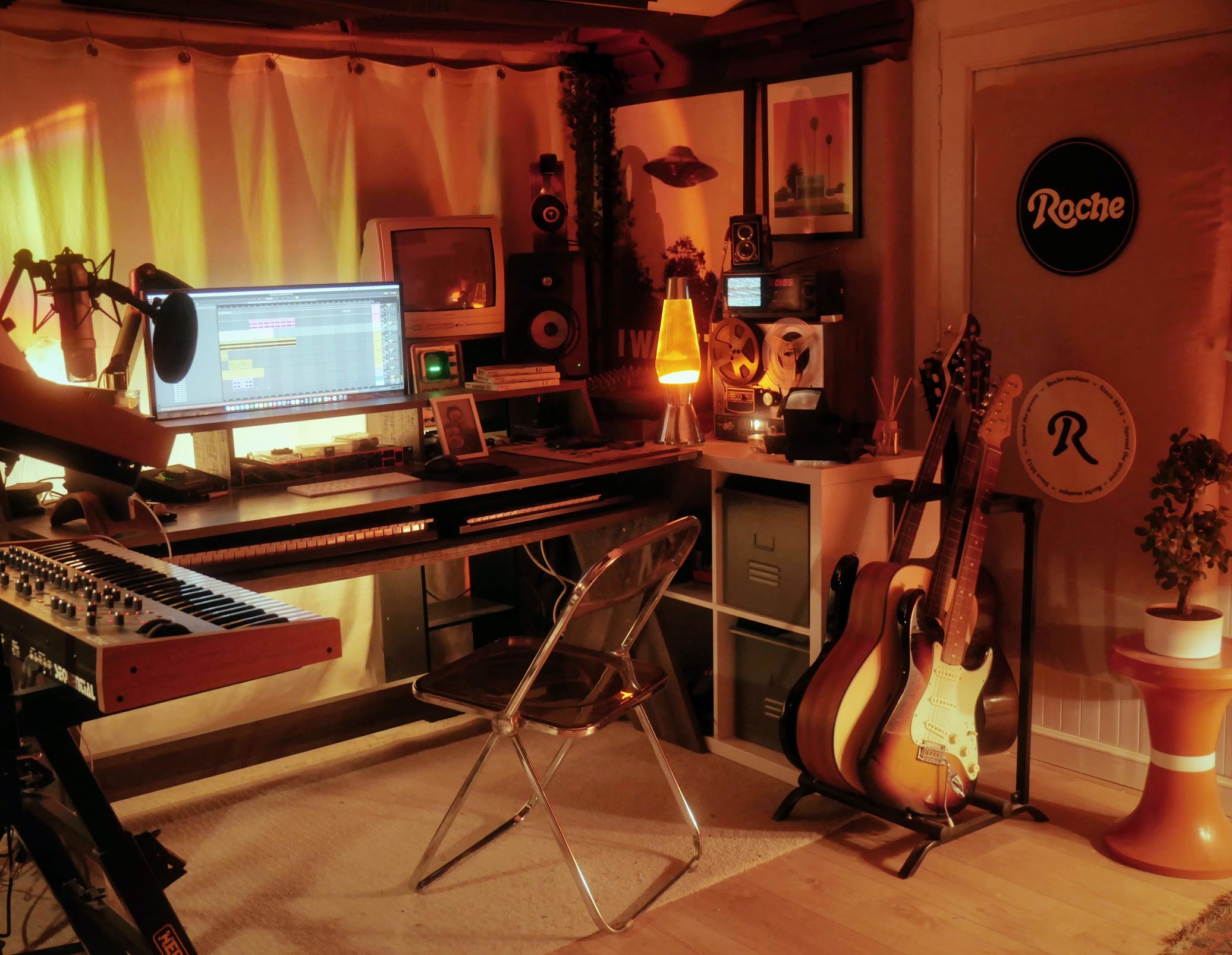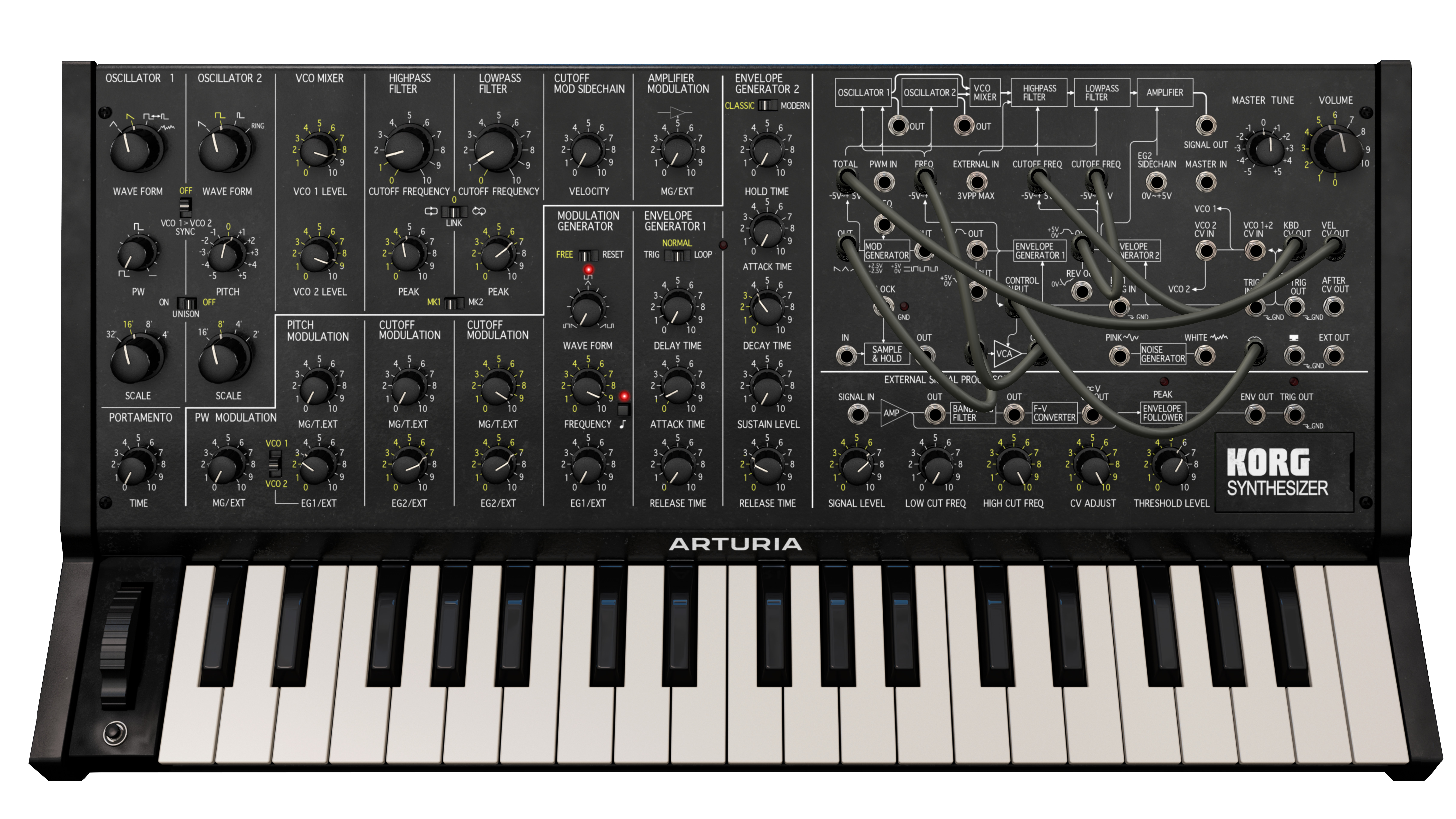
Spending much of the ‘10s at the heart of the Parisian electronic music scene, French producer and DJ Kartell channeled influences from soul, disco and R&B into slick and sultry beats that sparkled with the mirror-ball glitter of ‘90s French touch.
In 2021, Kartell escaped the big city to relocate to his birthplace of Tours, building a new basement studio and setting to work on producing his most personal project yet. That project is Everything Is Here, a 15-track statement that expands his already diverse sound in new directions, taking cues from everything from ‘70s soft rock to alt hip-hop.
With more of a live and instrumental feel than his earlier work, the project invites a varied cast of collaborators, including Tkay Maidza, Barney Bones and Kurtis Wells, to furnish Kartell’s polished, groove-heavy productions with pop hooks and extra personality.
We caught up with Kartell ahead of the release of Everything Is Here to find out more about how the album was made, and he was kind enough to leave us with three production tips for good measure.
Beginnings, gear, career
When did you start making music, and how did you first get started?
“I started making music around 15 years old when I got my first computer in my bedroom. It was a small Compaq and I started to play around with Fruity Loops and soon after that, Reason. The first beats were sampling cinematic sound with hip-hop beats, I was very into abstract hip-hop at the time, guys like DJ Premier and DJ Shadow.
When I switched to Reason this is really where I started to make full compositions
“When I switched to Reason this is really where I started to make full compositions, mainly electronic, house and disco, which I couldn’t really figure out how to make on FL Studio. The stock library of synth and samples from Reason were really all I needed at the time.”
Tell us about your studio/set-up.
“I moved out of Paris three years ago and bought a house in Tours, which had a basement that I adapted into a home studio. The family before were using that room as a home cinema, but the acoustics were terrible. There was floor tile that I replaced with a floating parquet and some homemade acoustic panels. I did everything on my own and it was a fun experience.
“The other focus when I moved in was to get a warm and light ambiance since there is no natural lighting. I want to be inspired when I lock myself down there for 7 hours straight. Some vintage 70’s furniture and lamps warmed up the place nicely.
“I was only using plugins before settling in there, but it turns out I moved in at the same time I was getting a new small publishing deal which allowed me to buy my first bits of hardware: a Prophet Rev2 and a Behringer Poly D. For such a low price, the sound and capabilities of the Poly D still surprise me and it’s probably the piece of gear I use the most now for bass and leads.
“I also got a TASCAM Portastudio 414 which is nice to use, has some great textures and can give a naturally pitched-down analogue sound. My day-to-day process, though, is still really about plugins.”
What DAW (or DAWs) do you use, and why did you choose it?
“I use Ableton Live 10, it’s a perfect balance for me as you get through sounds quickly when you are having a moment of inspiration, and the workflow for in-depth mixing and arrangements is also very natural.”
What one piece of gear in your studio could you not do without, and why?
“It’s actually software rather than a piece of gear. It’s called SoundID Reference and I use it to balance my Focal speakers and my headphones. I got so used to this that I can't make any music if this is not turned on.
"Since no room is acoustically 100% perfect, even with treatment, this software runs on top of your sound card and actually balances your speakers according to the room and to its specs. It has drastically improved my mixes.”

What's the latest addition to your studio?
“I bought an Akai 4000DS MK2 tape recorder to run my mixes through, and it’s an absolute pleasure to hear them coming to life with a subtle wobble - you can hear the physical interaction with the sound.”
What dream bit of gear would you love to have in your studio?
“I want to get a drum kit. Before making music, I played drums in a jazz school for a few months and this is something I really loved. I stopped after a while because I was frustrated I couldn’t get a set at home and experiment more. I’m glad I have my own space now and this is probably my next addition to the studio.
“I’m building up a shopping list at the moment, looking at various references. I want to get a Ludwig Acrolite snare, which seems to be very versatile and warm for the sound I’m looking for. I have some amazing drum loops packs from Jeremy Pages and Jack Reed which I’m using a lot, and the sound they have is a reference for me.”
When approaching a new track or project, where do you start?
Even if I have only one nice chord or one note running ambience, I will try to harmonize it with bass and other elements very quickly
“Chords and harmonies. Even if I have only one nice chord or one note running ambience, I will try to harmonize it with bass and other elements very quickly. I found myself having the most emotional results doing this and my album has a few tracks that started this way - Space Odyssey, for instance.
“I don’t actually know anything about chord theory and I can’t play the piano. I do everything by ear and feelings, and this technique has helped me a lot to get a good starting point.”
Tell us about how you approached the production on your new project. Did you experiment with any new techniques or methods?
“I had a clear image of the album sound and universe as soon as I got something like the first two tracks wrapped up. The theme of space exploration and the tribute to the ‘70s psych rock, mixed up with my influences of R&B and electronic music was quite challenging.
“Since I wanted a very visual and cinematic approach to the music, I started quite early to gather a moodboard of images with a warm psychedelic ‘70s approach that gave a direction and a meaning for the music and the sound design. I needed a clear direction very early on, since I’m very eclectic in my tastes and in my productions. With that aesthetic in mind I started writing the tracks almost entirely with plugins, Rickenbacker VST for bass, Repro-5, Triton and Clavinet for keyboard and synth, Farfisa and Solina for leads and pads, some Poly D for synth bass.
“I used a lot of the Arturia Analog Lab suite, which brilliantly captures the vintage sound I was looking for. To give some characters, room and unique textures to each track, I used a lot of plugins from Soundtoys and also of the VHS Audio Degradation Suite for Reaktor. I played some live guitars and bass also using amps and pedals from Waves GTR Tool Rack.

“For this project I knew that the fundamentals of the tracks, the bass and drums, needed to be played live. Once I got proper structures and some references, I sent the stems to Max Baby, who is an amazing musician, and he recorded live takes for the bass and the drums. He also played some keys and guitar and developed some ideas when needed, adding some arrangements and much-needed life to the project. Once I got his parts, which immediately pushed further the production, I’ve spent a lot of time experimenting with his layers and effects to glue it naturally into my vision.
“Then I did a premix for all the tracks, trying to push them as far as I could and have them coherent sonically together. I view the mixing part as essential as the composition, and I try to get the right sound as soon as possible in my process.
"Once I got nice reference mixes, I sent everything to Greasy Studios in Paris. Marcus, whom I have worked with before on my latest EP Daybreak, really knows my sound so it was very natural for him. He has an amazing collection of analogue compressors and EQs. All the mixes and masters went through analogue gear which gives the crispness I was looking for.”
What are you currently working on?
“The album I’ve just finished really explores a vintage analogue sound with live instruments, so for now I feel like working on more electronic and club music. I want to release a club EP next to develop the club aesthetic of this spacy sound. I also have in mind to release a deluxe version of the album with more rock-infused tracks that belong to the universe of the album.”
Kartell's Everything Is Here will be released May 31st on Roche Musique.
Kartell's music-making tips
1. Layer your kick
“One of the most useful tricks I've refined lately for club music is using different layers of kick, each one with a different purpose. I usually have one for the sub and depth where I take out everything above 100 Hz, another one for the presence peaking between 100 and 150Hz, and two others for the attack, where I usually roll out frequencies below 600Hz and 1.5kHz.
“The first two kicks, with the boom usually sitting around 50hz and the presence around 100hz, should actually peak together almost at the same db level. If you monitor them with a good EQ, adjust gain staging and clear out unwanted frequencies on each of them, you get a really clean thick kick.”
2. Use saturation to add glue and grit
“I have used a lot of Decapitator and Saturn 2 on many elements to get some subtle transients and warm breath. I have treated almost all my drums with a chain of Decapitator and Saturn, gluing everything nicely together since I’m using a lot of layers of live drums and samples. It’s also working nicely on synth and pads to degrade the sound a bit and bring up transient frequencies.”
3. Use room reverb and delay to sit your elements in a defined space
“Making music on a computer tends to sit everything on the same level, coming with the same energy and I feel like recreating a space and a room where it lives is essential. I have used a lot of reverbs, space modulator, frequency shifter and delays from Valhalla on this album.”







